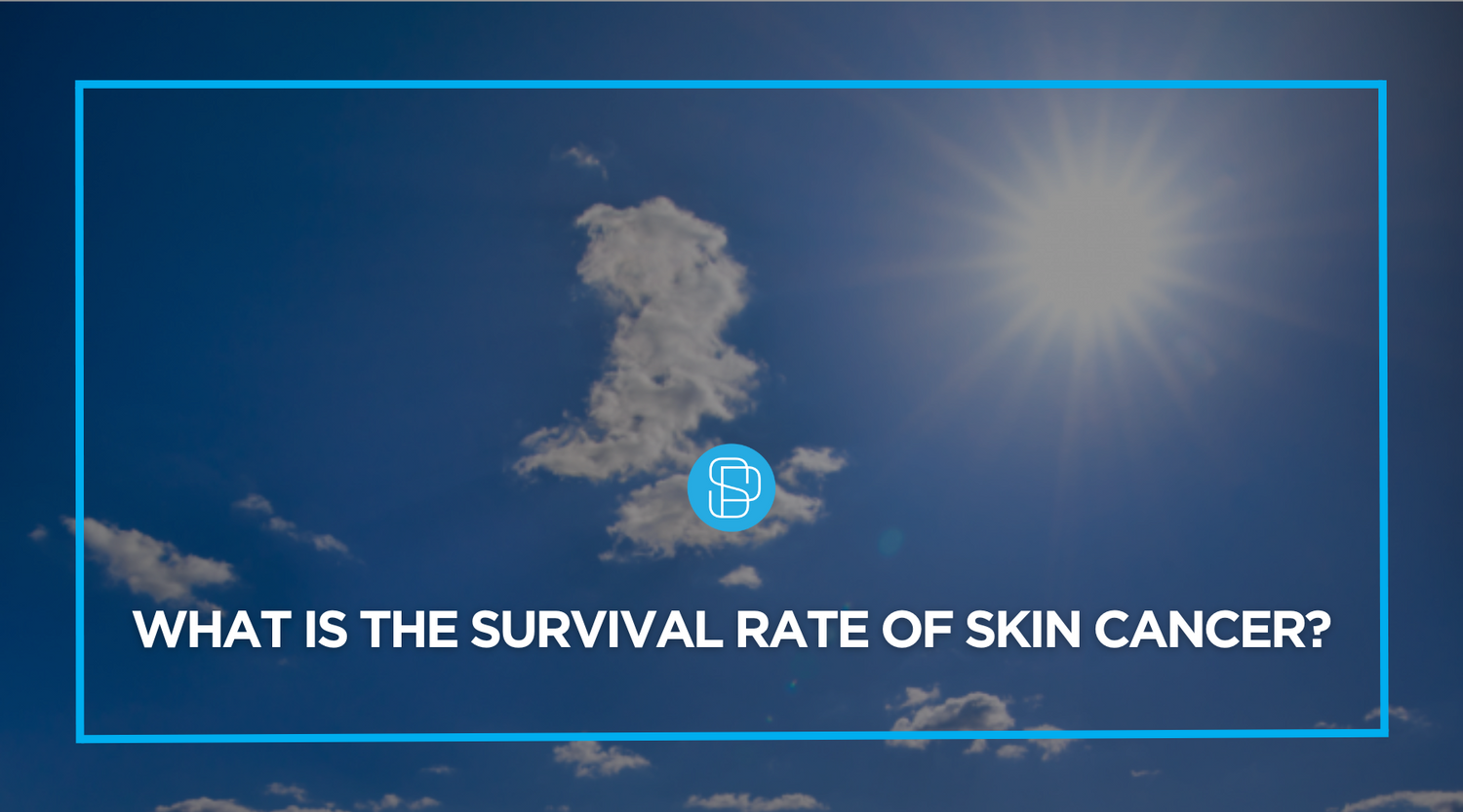-
Basal Cell Carcinoma (BCC):
This is the most common type of skin cancer and typically grows slowly. It often appears as a small, shiny bump or a flat lesion. BCC rarely spreads to other parts of the body, but it can cause significant skin damage if untreated. -
Squamous Cell Carcinoma (SCC):
SCC is the second most common form of skin cancer and may develop as a rough, scaly patch or a firm bump. While it can grow more quickly than BCC, SCC also rarely spreads but can become dangerous if not treated early. -
Melanoma:
The most dangerous type of skin cancer, melanoma can develop from existing moles or as a new, unusual spot on the skin. Melanomas are aggressive and can spread to other parts of the body if not caught early, making them more life-threatening.
Skin Cancer Survival Rates
The survival rates for skin cancer vary depending on the type of cancer and when it is diagnosed.
-
Basal Cell Carcinoma and Squamous Cell Carcinoma:
Both BCC and SCC have very high survival rates, especially when caught early. These types of skin cancer rarely lead to death, and the five-year survival rate is nearly 100% when detected early. -
Melanoma:
Melanoma is more serious, but even in cases of melanoma, survival rates are promising when detected early. According to Cancer Australia, the five-year survival rate for melanoma is about 92% for men and 96% for women. However, the survival rate drops significantly if the melanoma has spread to other parts of the body (metastasis).
Male vs Female Skin Cancer Statistics
Skin cancer affects both men and women, but there are some notable differences between genders:
-
Men:
Men are more likely to be diagnosed with skin cancer, particularly melanoma, than women. This may be due to increased outdoor exposure or lower rates of sun protection. Additionally, men tend to be diagnosed with more advanced stages of skin cancer, leading to a slightly lower survival rate compared to women. In Australia, men are almost twice as likely to die from melanoma than women. -
Women:
Women generally have a higher survival rate for melanoma, partly because they tend to detect the cancer earlier. Women are also more likely to engage in preventive measures like wearing sunscreen and protective clothing such as UPF50+ clothing, including sun sleeves and shoulder wraps.
The Importance of Regular Skin Checks
One of the most effective ways to prevent skin cancer from becoming life-threatening is through regular skin checks. While protecting your skin from UV damage is critical, early detection of skin cancer is just as important for survival.
How Often Should You Get a Skin Check?
-
Annual Skin Checks:
It is recommended that adults in Australia get a skin check by a healthcare professional at least once a year. If you have a history of sunburns, spend a lot of time outdoors, or have a family history of skin cancer, you may need to get checked more frequently—every 6 months. -
At-Home Skin Checks:
In addition to visiting a doctor, you should regularly perform at-home checks. Look for any new or changing moles, spots, or unusual skin patches, especially in areas frequently exposed to the sun.
Where to Get a Skin Check
-
General Practitioners (GPs):
Most GPs can conduct basic skin checks, especially if you are noticing changes in your skin or have particular concerns. If they identify anything suspicious, they will refer you to a specialist for further investigation. -
Dermatologists:
Dermatologists specialize in skin health and can provide more thorough skin checks. They use dermoscopy to closely examine spots and moles and may perform biopsies if necessary. -
Skin Cancer Clinics:
Many dedicated skin cancer clinics operate across Australia, offering comprehensive skin checks using advanced imaging technology. These clinics can be an excellent option if you are looking for specialized skin cancer detection services.
Preventing Skin Cancer with Sun Protection
While regular skin checks are crucial, preventing skin cancer is largely within your control through proper skin protection measures:
-
Use Sunscreen:
Always apply broad-spectrum sunscreen with an SPF of at least 30 when spending time outdoors, and reapply regularly. -
Wear Protective Clothing:
Clothes with UPF50+ protection, like SParms sun sleeves, shoulder wraps, and gloves, can provide an extra layer of defense against harmful UV rays. UPF50+ clothing blocks out over 98% of UV rays, making it an essential part of any sun protection plan. -
Seek Shade:
Try to avoid being outdoors during peak UV hours, generally between 10 a.m. and 4 p.m. If you must be outside, seek shade when possible and wear a wide-brimmed hat. -
Monitor Your Skin:
Regularly perform self-checks and look for new spots or changes in your existing moles. Catching skin cancer early is key to improving your survival rate.
Conclusion
Skin cancer is a serious but preventable condition. Early detection through regular skin checks and proper sun protection are vital to maintaining healthy skin and improving your survival rate. Whether you're a sportsperson, outdoor enthusiast, or simply someone who enjoys spending time in the sun, ensuring you are properly protected can make a world of difference. Incorporate UPF50+ clothing, like SParms sun sleeves, shoulder wraps, and gloves, alongside high-quality sunscreen to give your skin the best chance against harmful UV rays.
Disclaimer
The information provided in this blog is for informational purposes only and should not be considered as medical advice. If you have any concerns or questions about your health, or if you suspect you may have skin cancer, please consult a qualified healthcare professional for personalised advice.
